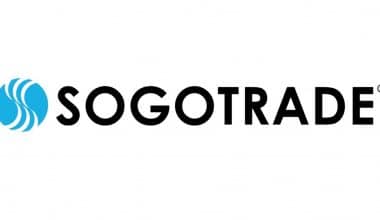Holistic health approaches seem to be popping up everywhere lately. More people are trying acupuncture, buying herbal supplements, and signing up for meditation classes. Major hospitals have “integrative health” centers, and even some insurance companies are starting to cover alternative treatments.
So what’s driving this surging interest in holistic health? In a nutshell, a lot more folks are seeking natural, preventive ways to enhance their wellbeing. They want to treat the whole person – mind, body and spirit. And they’re willing to pay out-of-pocket to find relief from conditions that conventional medicine hasn’t cured.
The result? Explosive growth for the global holistic health market, which is expected to reach nearly $500 billion by 2030. Read on to learn what’s fueling this boom, and why holistic health is going mainstream.
Defining Holistic Health
To understand the holistic health phenomenon, let’s first break down what it means. Holistic health, a principle embraced by the Center For Functional Medicine, is based on the idea that true wellness comes from caring for your entire being. This contrasts Western medicine’s more segmented approach of treating individual symptoms and specialties.
Some key principles of holistic health include:
- Treating the whole person – mind, body, emotions, relationships, environment
- Integrating conventional and alternative approaches
- Focusing on prevention and wellbeing
- Empowering patients to participate in their own healing
- Addressing imbalances in the body’s energy flow
You may also hear terms like “complementary medicine”, “integrative medicine” or “functional medicine” which have lots of overlap with holistic health. They all share the goal of creating optimal wellness by harmonizing the mind, body and spirit.
Holistic health encompasses a diverse array of modalities. Some of the major categories include:
Mind-body practices like meditation, yoga, tai chi and guided imagery use physical activity, breathing, and focus techniques to improve both physical and mental health.
Whole medical systems such as Traditional Chinese Medicine and ayurveda from India take a comprehensive approach to treatment using unique philosophies, diagnostics and therapies.
Biological-based practices use naturally occurring substances like herbs, foods, vitamins or minerals to prevent and treat illness. Nutritional therapy and herbalism fall under this umbrella.
Manipulative and body-based practices such as chiropractic and osteopathy focus on manipulating or adjusting the body’s structures to treat dysfunction and improve function.
Energy therapies such as reiki and therapeutic touch stimulate energy flow within the body to restore balance and wellbeing.
The Surging Holistic Health Market
The global market for holistic health is expanding at an impressive clip. Valued at $117 billion in 2022, one estimate projects it ballooning to over $400 billion by 2030. That’s a compound annual growth rate of around 20% – much faster expansion than conventional healthcare.
What’s fueling this demand? Several key factors:
Dissatisfaction with mainstream medicine – Many people feel frustrated by impersonal care, rushed appointments, and lack of treatment options. They’re turning to holistic alternatives for more choices.
Interest in natural preventive approaches – Consumers increasingly want to prevent illness and optimize wellness, rather than just treat disease. Holistic therapies fit the bill.
Willingness to pay out-of-pocket – Most alternative modalities aren’t covered by insurance. But holistic consumers are willing to pay cash for treatments they believe in.
Increasing research on safety and effectiveness – While data is still limited, more studies are verifying the efficacy of certain holistic therapies, building credibility.
In tandem with rising consumer demand, holistic health services are expanding into the mainstream:
Integration with conventional medicine – Many hospitals now offer holistic therapies. Acupuncture, dietitians, and mindfulness training are common.
Coverage by insurance – While limited, some insurers are starting to reimburse for chiropractic, acupuncture, and even homeopathy in certain states.
Corporate wellness programs – More companies are offering holistic health services like yoga, massage, and stress-reduction classes as employee benefits.
Retail outlets – Health food stores, pharmacies, and even grocery stores now stock herbal remedies, supplements, and natural personal care products.
E-commerce convenience – Consumers can now easily purchase everything from medicinal teas to vitamin IV drips with the click of a mouse.
Two demographics primarily catalyzing the holistic health boom are millennials and baby boomers. Millennials came of age when alternative approaches were prevalent, making them more inclined to seek non-traditional care. Boomers possess the discretionary income to pay out-of-pocket for holistic services promising to attenuate aging and extend vitality.
While the Americas and Europe currently lead the global market, demand across the Asia Pacific region is expected to grow exponentially in coming years as holistic modalities gain traction in countries like China and India.
Who is the Holistic Health Consumer?
So who are you, the holistic health consumer? Maybe you’re a baby boomer with some extra income and a desire to age gracefully. You want to call the shots about your health. Or perhaps you’re a millennial who came of age with yoga and superfoods already part of the culture. Holistic approaches just feel normal to you.
Or are you simply burnt-out and stressed-out from modern life? You crave some acupuncture, massage and meditation to cope. Or suffering from ongoing issues that conventional medicine can’t seem to resolve – chronic fatigue, recurring pain, autoimmunity. You’re ready to try something new to get your life back.
Maybe you care about personal growth – spiritual exploration and transformation. Holistic modalities like energy healing and mindfulness offer pathways to better know your inner self. Or perhaps you avoid synthetic chemicals and Big Pharma pills whenever possible. For you, it’s all about natural organic products, herbs and homeopathy.
No matter which of these describes you, some common threads emerge among holistic consumers: You want autonomy in health decisions, free from paternalistic doctors. Dissatisfied with impersonal and fragmentary conventional care, you believe the mind, body and soul are profoundly interconnected.
You trust the body’s innate capacities to heal itself under the right conditions. Ancient healing traditions attract you, as do natural products and a concept of health that’s about thriving, not just surviving.
And crucially, you’re willing to dig into your own pocket to pay for holistic services typically not covered by insurance. This enables the holistic market to flourish and expand beyond limited insurance reimbursement. In short, you vote with your dollars to embrace a more holistic way of caring for your whole self.
Hurdles Facing the Holistic Health Market
For all its growth and potential, the holistic health field still faces some obstacles on its path to mainstream integration.
Variable regulation – Oversight and licensing requirements differ vastly between modalities and jurisdictions. This leads to inconsistencies in practitioner training and quality.
Limited scientific validation – While research is accelerating, evidence to support efficacy and safety is still sparse for many holistic approaches compared to conventional therapies.
Insurance coverage gaps – Most holistic services are not covered by insurance, limiting affordability. But as more data emerges, this is slowly changing.
Integrative challenges – Integrating holistic services into mainstream healthcare settings can be clumsy when paradigms and institutional values clash.
Consumer confusion – With so many unfamiliar modalities and terminologies, it can be difficult for consumers to navigate their options and make informed choices.
Safety concerns – As with any active treatments, holistic therapies carry some risks if improperly administered. And interactions with drugs or certain medical conditions are possible.
Shortage of qualified practitioners – For modalities like acupuncture and homeopathy where rigorous training is required, supply of skilled providers can be limited based on location.
While obstacles remain, none seem large enough to halt the holistic health momentum. Continued growth seems imminent.
Where is Holistic Health Headed?
What does the future hold for holistic health? Here are a few projections:
Market expansion – The global market is forecasted to grow at around 22% annually, potentially reaching almost $500 billion by 2030. Key drivers will likely include rising chronic disease, stress, environmental toxicity, and consumer willingness to pay out-of-pocket. Corporate wellness programs represent one growth channel, as more companies adopt holistic health initiatives.
Greater integration – As research continues to accumulate, more conventional medical institutions will integrate modalities like acupuncture, yoga, and massage into treatment plans. Medical schools may expand curriculum on holistic approaches. Hospital-based integrative health centers will probably multiply, especially for pain management, rehab, and stress reduction.
Increased acceptance and utilization – While still eclipsing holistic health in market share, conventional medicine will probably incrementally accept evidence-based alternative approaches as beneficial complements. More insurance companies will expand coverage for therapies like chiropractic and acupuncture.
Ongoing innovation – Personalized medicine and sophisticated apps and biosensors will allow holistic modalities to be tailored to individuals’ biochemistry, genetics, values and lifestyles for optimal benefits. Digital delivery will also expand access and affordability.
Emerging global markets – Countries like China, India and Brazil with rich traditions of indigenous traditional medicine seem primed for rapid growth as consumers increasingly meld ancient folk remedies with high tech conventional care.
Advances in functional medicine – This field applies comprehensive lifestyle, genetics and lab testing to identify and correct underlying imbalances long before disease develops. This mirrors holistic health’s preventive focus. As technology progresses and acceptance builds, functional medicine techniques will likely gain traction.
In Conclusion
Rather than a fleeting fad, the shift toward holistic health seems a genuine response to the limitations of modern medical systems. Seeking more natural, preventive, and patient-centered solutions, people are hungry for approaches that treat the whole person. And they’re voting with their healthcare dollars.
While adoption has been swifter in wealthy nations up to now, the regional scope of the holistic health market will likely continue expanding across the globe. As scientific scrutiny sheds more light on the risks and benefits of specific modalities, the most evidence-based approaches should gain prominence. Regulation and training standards will probably evolve to uphold quality and safety.
For individuals hoping to enhance wellbeing, the key is finding a personalized blend of conventional and holistic care suited to one’s health priorities. But all signs point to holistic health staking a permanent place in how people conceive of and care for their bodies, minds and spirits. The market outlook remains bright.






